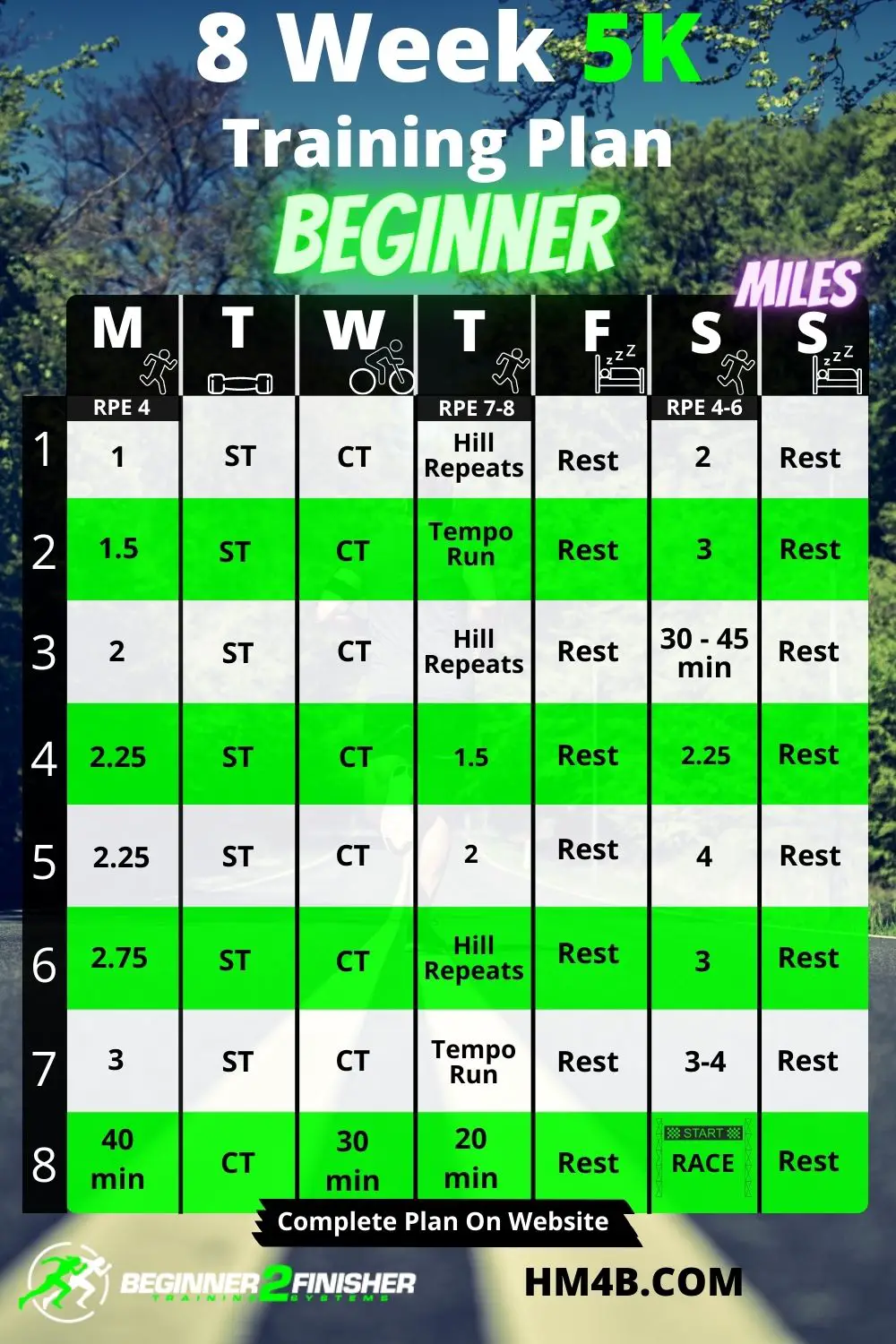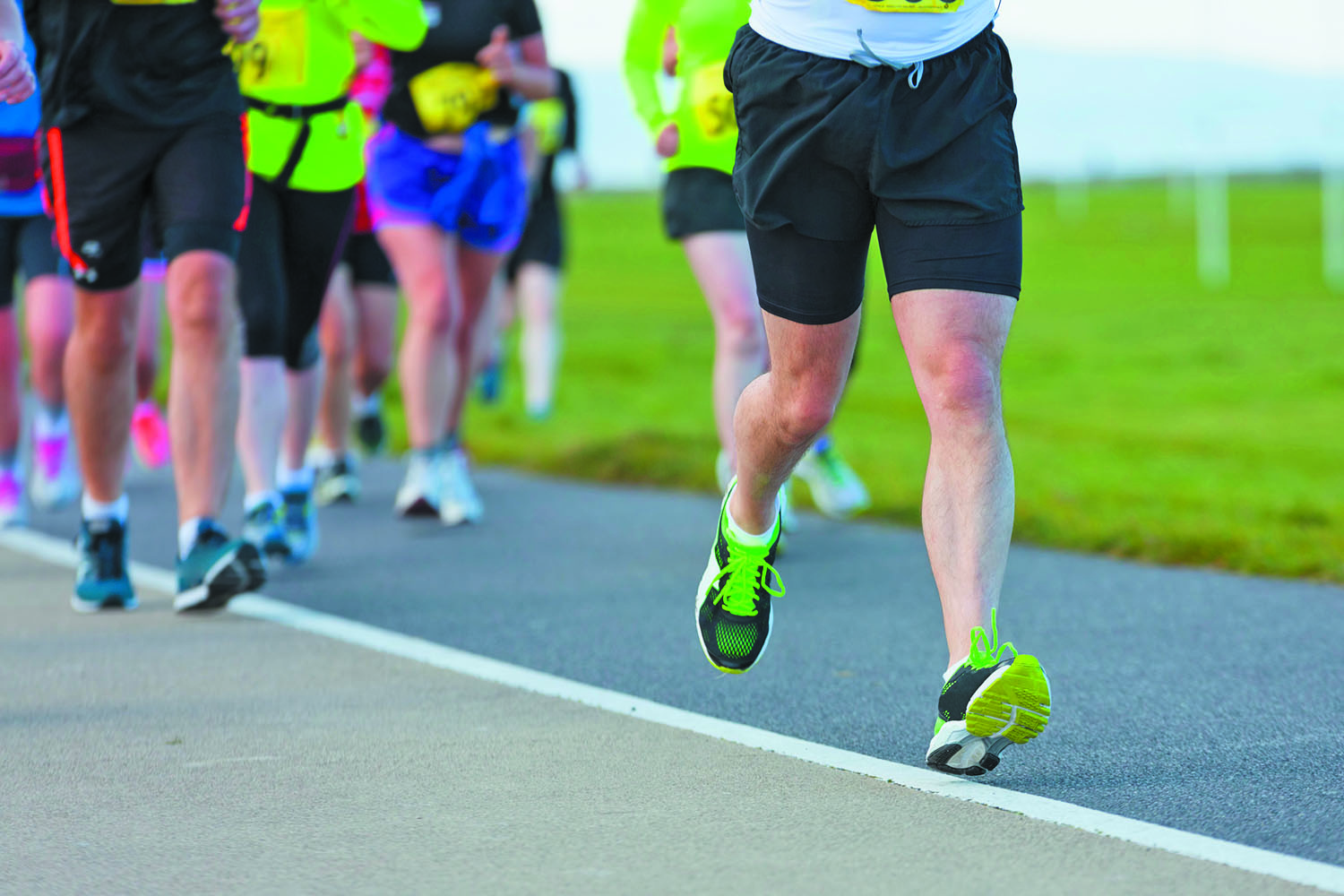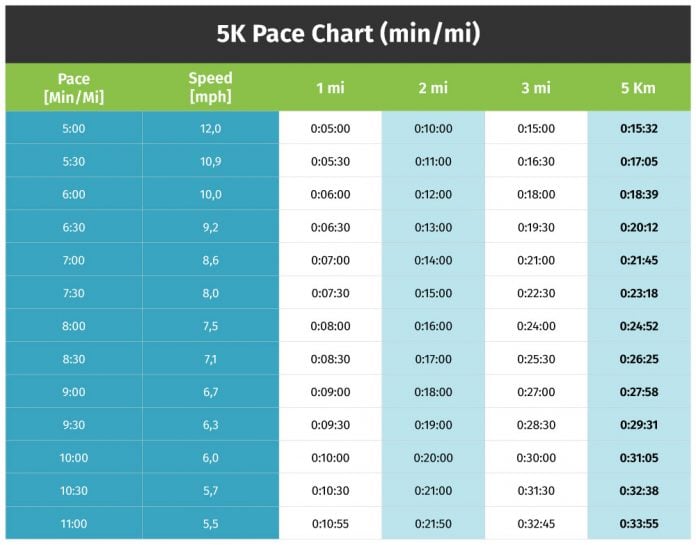Understanding the Basics: What Makes a 5K Time Decent?
A ‘decent’ 5K time can be subjective and depends on various factors such as age, fitness level, and running experience. For beginners, achieving a sub-30-minute 5K time may be considered respectable, while experienced runners may aim for a time below 20 minutes. Personal best (PB) times are crucial indicators of a runner’s progress, regardless of their current level.
Setting Realistic Goals: Factors Influencing a 5K Time
Age, gender, fitness level, running frequency, and training history are key factors that influence a 5K running time. For instance, older runners typically have slower times than younger runners due to natural age-related declines in physical abilities. Gender differences also exist, with men generally having faster times than women. However, individual performance can vary widely based on fitness level, running experience, and dedication to training.
To establish a realistic goal for your 5K time, consider your current fitness level and running experience. If you are new to running, focus on building a solid foundation by gradually increasing your running distance and frequency. As your fitness improves, challenge yourself with more intense workouts and longer runs to enhance your running efficiency and endurance. By setting SMART (Specific, Measurable, Achievable, Relevant, Time-bound) goals, you can create a clear path towards achieving your desired 5K time.
When setting goals, consider your running history and the progress you’ve made so far. If you’ve consistently improved your 5K time over the past few months, you may be ready to aim for a more ambitious goal. However, avoid setting overly aggressive goals that could lead to disappointment or burnout. Instead, focus on steady, sustainable progress and celebrate each small victory along the way.
How to Establish a Benchmark: Assessing Your Current 5K Time
To determine your current 5K running ability, consider participating in a trial race or time trial. This process involves running a 5K distance at your best effort, allowing you to establish a baseline time for future comparisons and goal-setting. Here are some tips to help you prepare for and execute a successful 5K trial:
- Warm-up properly: Begin with a 10- to 15-minute warm-up, including light jogging, stretching, and dynamic exercises to increase your heart rate and prepare your muscles for the trial.
- Choose a familiar course: Select a flat, traffic-free route that you’re familiar with to minimize external factors that could affect your performance. Ideally, the course should be a certified 5K route or measure close to 5K using a GPS device.
- Pace yourself: Start at a comfortable pace and avoid going out too fast. Maintain a consistent effort throughout the trial, focusing on your breathing and form. If possible, enlist a friend or running partner to help you maintain a steady pace.
- Stay hydrated: Ensure you’re well-hydrated before the trial, and consider carrying water if the trial lasts longer than 30 minutes. However, avoid consuming large amounts of fluids immediately before the trial to prevent discomfort or cramping.
- Recover adequately: After the trial, perform a cool-down routine consisting of light jogging and stretching. Monitor your heart rate and ensure it returns to normal within 10 to 15 minutes. Record your time and any relevant notes about your performance, such as weather conditions, terrain, or how you felt during the trial.
By consistently following these steps, you can establish a reliable baseline 5K time and track your progress as you work towards improving your performance. Remember, the primary goal of a trial race or time trial is to assess your current abilities and identify areas for improvement. Stay patient, focus on your training, and celebrate your achievements as you work towards reaching your desired 5K time.
Improving Your 5K Time: Training Strategies and Techniques
To improve your 5K running time, consider incorporating various training strategies and techniques into your weekly schedule. These methods can help you build endurance, increase speed, and enhance overall running efficiency. Here are some training methods to consider:
- Interval training: This technique involves alternating between high-intensity and low-intensity intervals. For example, you could run 400 meters at a fast pace, followed by 400 meters at a slower pace. Interval training helps improve cardiovascular fitness and speed. Aim to include 2 to 3 interval sessions per week, with each session lasting between 20 to 30 minutes.
- Tempo runs: Tempo runs involve running at a challenging but sustainable pace for an extended period. These runs help improve lactate threshold, allowing you to maintain a faster pace for longer durations. Incorporate 1 to 2 tempo runs per week, with each run lasting between 20 to 40 minutes.
- Hill repeats: Running uphill at a steady pace can help build leg strength and power. Find a moderately steep hill and run up it at a challenging but controlled pace. After reaching the top, jog back down as recovery. Aim for 4 to 6 hill repeat intervals during each session, with each session lasting between 20 to 30 minutes.
- Long-distance runs: Include 1 long, slow run per week to build endurance and aerobic capacity. Gradually increase the distance of these runs over time, aiming for a weekly long run that is between 60 to 90 minutes in duration.
By incorporating these training strategies into your weekly schedule, you can systematically improve your 5K running time. Remember to allow for adequate recovery between intense training sessions and listen to your body to avoid overtraining. Consistency and patience are key when working towards a faster 5K time. As you progress, regularly assess your performance and adjust your training plan accordingly to continue making strides towards your goal.
Strength and Conditioning: Enhancing Running Performance
Strength and conditioning exercises play a crucial role in improving your 5K running time by targeting major running muscle groups, such as the legs, core, and upper body. Incorporating these exercises into your weekly routine can help increase power, stability, and overall running efficiency. Here are some specific exercises and cross-training activities to consider:
- Squats: This lower body exercise targets the quadriceps, hamstrings, and glutes, which are essential muscle groups for running. Perform 3 sets of 10 to 12 repetitions, increasing the weight as you become stronger.
- Planks: Planks engage the core muscles, promoting better posture and stability during running. Hold a plank position for 30 to 60 seconds, focusing on maintaining a straight line from your head to your heels. Complete 3 sets.
- Push-ups: Push-ups target the upper body, including the chest, shoulders, and triceps. Perform 3 sets of 10 to 12 repetitions, adjusting the width of your hands to target different muscle groups.
- Swimming: Swimming is a low-impact cross-training activity that can help improve cardiovascular fitness and upper body strength. Aim for 30 to 45 minutes of swimming, focusing on technique and endurance.
- Cycling: Cycling is another low-impact cross-training activity that can help build leg strength and endurance. Incorporate 30 to 60-minute cycling sessions into your weekly routine, focusing on maintaining a consistent cadence and effort.
- Yoga: Yoga can help improve flexibility, balance, and mental focus. Attend a yoga class once or twice a week, focusing on poses that target the hips, hamstrings, and core.
By incorporating strength and conditioning exercises and cross-training activities into your weekly routine, you can enhance your running performance and work towards achieving a faster 5K time. Remember to start with lower weights or intensities and gradually increase the difficulty as you become stronger. Additionally, allow for adequate recovery between strength training sessions to prevent injury and promote optimal performance.
Nutrition and Recovery: Fueling Your Body for Optimal Performance
Proper nutrition and recovery are essential components of any 5K training plan. Eating the right foods at the right times can help optimize your performance, promote recovery, and prevent injuries. Here are some guidelines and tips for pre-run, during-run, and post-run meals and snacks:
- Pre-run meals: Aim to consume a balanced meal 2 to 3 hours before your run, consisting of carbohydrates, protein, and healthy fats. Examples include whole grain toast with avocado and scrambled eggs or a bowl of oatmeal with fruit and nuts. Stay well-hydrated by drinking water or electrolyte-infused beverages.
- During-run fuel: For runs longer than 60 minutes, consider consuming carbohydrate-rich snacks or energy gels to maintain energy levels. Aim for 30 to 60 grams of carbohydrates per hour, depending on your body size and intensity of the run. Remember to also stay hydrated by consuming water or sports drinks at regular intervals.
- Post-run meals: After your run, prioritize consuming a meal or snack that combines carbohydrates and protein within 30 to 60 minutes. This can help promote muscle recovery and glycogen replenishment. Examples include a protein smoothie with fruit and yogurt or a turkey and cheese sandwich on whole grain bread.
Additionally, focus on maintaining proper hydration, sleep, and rest throughout your training. Aim to drink at least 8 to 10 cups of water per day, and increase your fluid intake on days with intense workouts or long runs. Ensure you’re getting 7 to 9 hours of sleep each night to promote muscle recovery and overall well-being. Finally, allow for adequate rest between intense training sessions to prevent injury and overtraining. By prioritizing nutrition and recovery, you can optimize your performance and work towards achieving a faster 5K time.
Race Day Preparation: Tips for a Successful 5K Experience
Race day can be both exciting and nerve-wracking for runners. To ensure a successful and enjoyable 5K experience, follow these practical tips for race day preparation:
- Gear selection: Choose comfortable, moisture-wicking clothing and well-fitting running shoes. Avoid wearing new gear on race day to prevent chafing or blisters. If the weather is cool, consider wearing layers that can be removed as needed.
- Warm-up routine: Perform a dynamic warm-up before the race to prepare your muscles for the run. This can include activities such as leg swings, high knees, and butt kicks. Aim for a 10- to 15-minute warm-up, gradually increasing your heart rate and body temperature.
- Pacing strategies: Develop a pacing strategy based on your goal time and current fitness level. Consider using a GPS watch or mobile app to help maintain a consistent pace throughout the race. Avoid starting too fast, which can lead to fatigue and poor performance in the later stages of the race.
- Mental preparation: Employ mental preparation techniques such as visualization, positive self-talk, and goal-setting to help maintain focus and motivation during the race. Stay relaxed and enjoy the experience, remembering that the primary objective is to challenge yourself and have fun.
By following these tips, you can optimize your performance and enjoy a successful 5K race day experience. Remember to trust your training, stay focused, and embrace the challenge of reaching your desired 5K time.
Monitoring Progress: Tracking Your 5K Time Improvements
Tracking your 5K time improvements is essential for monitoring your progress and adjusting your training plan accordingly. By regularly conducting time trials or participating in organized races, you can gain valuable insights into your running performance and make data-driven decisions about your training. Here are some tips for monitoring your 5K time improvements:
- Regular time trials: Schedule a monthly or bi-monthly 5K time trial to assess your progress. Choose a consistent, flat course to ensure accurate comparisons between trials. Aim to maintain a consistent pacing strategy and effort throughout the trial.
- Organized races: Participate in local 5K races to gain race experience and compare your times to other runners. This can help you identify areas for improvement and provide motivation to push yourself to new levels.
- Tracking improvements: Document your 5K times and any relevant notes, such as weather conditions, course difficulty, or training volume. Use a spreadsheet or training log to visualize your progress over time. Celebrate your achievements as you reach new personal bests and set new, ambitious goals for your 5K time.
- Adjusting your training plan: Based on your 5K time improvements, make data-driven decisions about your training. If your times are stagnating, consider incorporating new training strategies or techniques, such as interval training, tempo runs, or hill repeats. If your times are improving, maintain your current training plan or gradually increase the intensity or volume to continue making progress.
By monitoring your 5K time improvements, you can optimize your training, set realistic goals, and celebrate your achievements as you work towards achieving a faster 5K time. Remember to stay patient, trust the process, and enjoy the journey of self-improvement and personal bests.








